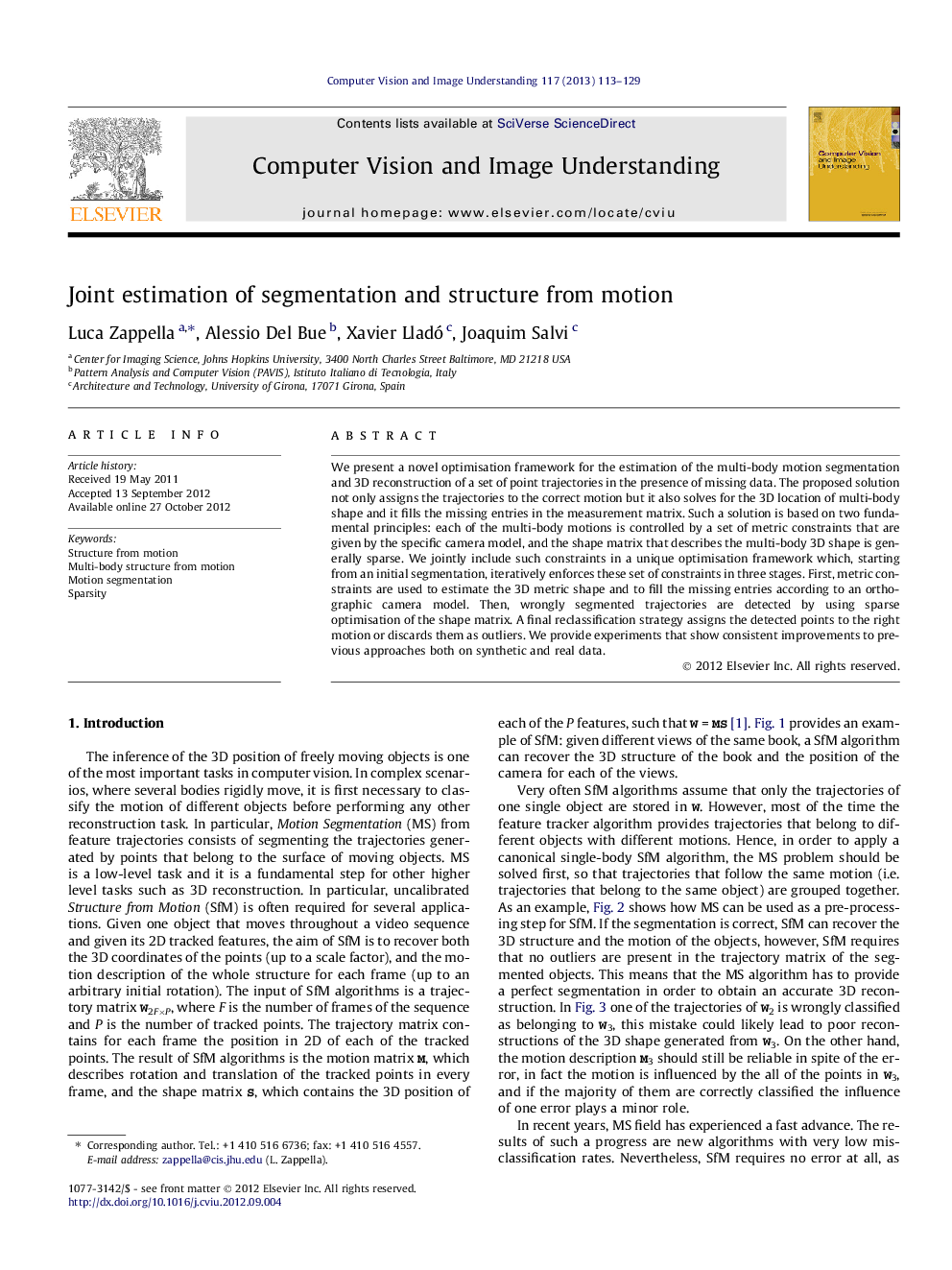| Article ID | Journal | Published Year | Pages | File Type |
|---|---|---|---|---|
| 527806 | Computer Vision and Image Understanding | 2013 | 17 Pages |
We present a novel optimisation framework for the estimation of the multi-body motion segmentation and 3D reconstruction of a set of point trajectories in the presence of missing data. The proposed solution not only assigns the trajectories to the correct motion but it also solves for the 3D location of multi-body shape and it fills the missing entries in the measurement matrix. Such a solution is based on two fundamental principles: each of the multi-body motions is controlled by a set of metric constraints that are given by the specific camera model, and the shape matrix that describes the multi-body 3D shape is generally sparse. We jointly include such constraints in a unique optimisation framework which, starting from an initial segmentation, iteratively enforces these set of constraints in three stages. First, metric constraints are used to estimate the 3D metric shape and to fill the missing entries according to an orthographic camera model. Then, wrongly segmented trajectories are detected by using sparse optimisation of the shape matrix. A final reclassification strategy assigns the detected points to the right motion or discards them as outliers. We provide experiments that show consistent improvements to previous approaches both on synthetic and real data.
► Solution to the multi-body structure from motion problem. ► Use of unexploited structure from motion constraints to correct a motion segmentation solution. ► Link between structure from motion and motion segmentation. ► Ability to recover missing data in the trajectory matrix.
